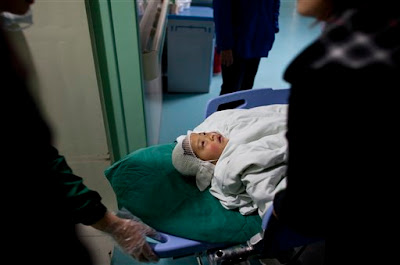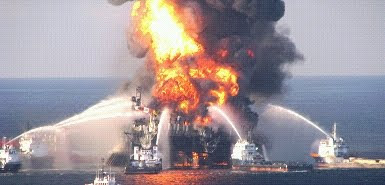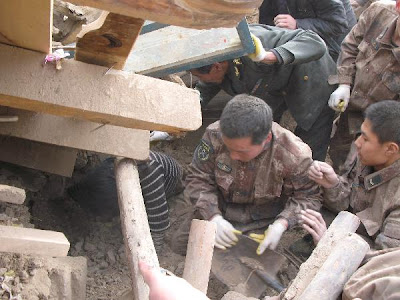 Two knife attacks on school classrooms in as many days have sent Chinese parents into fright, prompting demands for greater security and a bout of national soul searching over the atrocities.
Two knife attacks on school classrooms in as many days have sent Chinese parents into fright, prompting demands for greater security and a bout of national soul searching over the atrocities.Yesterday a former insurance salesman ripped and stabbed his way through a kindergarten in southeast China, wounding 31 people.
Officials said that Xu Yuyuan, 47, broke into a classroom at the Zhongxin kindergarten in Taixing city, Jiangsu province, about 9.40am and attacked the children with a knife. Residents living next door, armed with fire extinguishers and brooms, finally restrained the man until the police could reach the scene, one report said.
The man stabbed twenty-eight children and one teacher, a security guard and a school volunteer who tried to defend the terrified four-year-olds. A staff member at the Taixing No 1 People’s Hospital said that some children were being treated there. “The doctors are trying to save them,” he said.
Five students were in critical condition in hospital, said Zhu Guiming, an official with the propaganda department in Taixing city.
The well-regarded Caijing magazine said that 4 children had died in the attack, but officials told state media that no deaths had been reported and the condition of those who were most badly hurt was stabilizing.
Police arrested Mr Xu, who was described as unemployed. He worked for a local insurance company in 2001 but then took part in illegal pyramid selling schemes.
Less than 24 hours earlier a former teacher with a history of mental illness stabbed 16 pupils and a teacher in a primary school. The man, 33, rushed into classrooms at the Leizhou primary school in the southern Guangdong province, brandishing a knife about a foot long. None of the injuries were reported to be serious.
The attacker then went to a top-floor balcony where he threatened to throw himself off. He was eventually arrested and taken away in handcuffs.
Several schools in China have experienced similar attacks in recent years. In a country where many parents have only a single child under the strict family planning policy, shock and anxiety have spread in internet chat rooms. Some have called for adults to be allowed to enter school premises only if they have a photograph of their child; others are saying that their children should be armed with sticks as a minimum defense. Commenting on the attack at the primary school in Leizhou the Beijing News said: “More concrete measures should be taken to make school the safest place.”
Officials said that Xu Yuyuan, 47, broke into a classroom at the Zhongxin kindergarten in Taixing city, Jiangsu province, about 9.40am and attacked the children with a knife. Residents living next door, armed with fire extinguishers and brooms, finally restrained the man until the police could reach the scene, one report said.
The man stabbed twenty-eight children and one teacher, a security guard and a school volunteer who tried to defend the terrified four-year-olds. A staff member at the Taixing No 1 People’s Hospital said that some children were being treated there. “The doctors are trying to save them,” he said.
Five students were in critical condition in hospital, said Zhu Guiming, an official with the propaganda department in Taixing city.
The well-regarded Caijing magazine said that 4 children had died in the attack, but officials told state media that no deaths had been reported and the condition of those who were most badly hurt was stabilizing.
Police arrested Mr Xu, who was described as unemployed. He worked for a local insurance company in 2001 but then took part in illegal pyramid selling schemes.
Less than 24 hours earlier a former teacher with a history of mental illness stabbed 16 pupils and a teacher in a primary school. The man, 33, rushed into classrooms at the Leizhou primary school in the southern Guangdong province, brandishing a knife about a foot long. None of the injuries were reported to be serious.
The attacker then went to a top-floor balcony where he threatened to throw himself off. He was eventually arrested and taken away in handcuffs.
Several schools in China have experienced similar attacks in recent years. In a country where many parents have only a single child under the strict family planning policy, shock and anxiety have spread in internet chat rooms. Some have called for adults to be allowed to enter school premises only if they have a photograph of their child; others are saying that their children should be armed with sticks as a minimum defense. Commenting on the attack at the primary school in Leizhou the Beijing News said: “More concrete measures should be taken to make school the safest place.”
 Chinese President Hu Jintao became the first Chinese visitor to attend the Russian pavilion at the Shanghai World Expo 2010.
Chinese President Hu Jintao became the first Chinese visitor to attend the Russian pavilion at the Shanghai World Expo 2010. Thai troops have fired into the air near a group of anti-government protesters in an effort to block them from taking their protest to a suburban Bangkok market.
Thai troops have fired into the air near a group of anti-government protesters in an effort to block them from taking their protest to a suburban Bangkok market.































